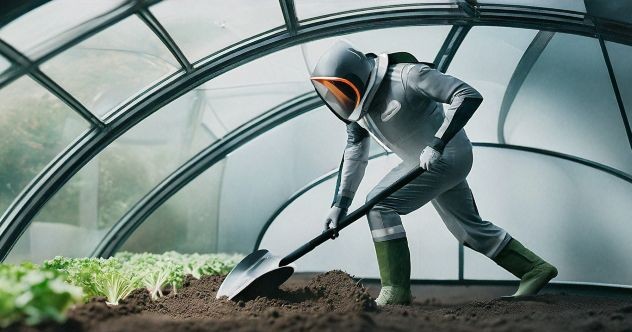Now Reading: 10 Bold Concepts for Colonizing Outer Space
-
01
10 Bold Concepts for Colonizing Outer Space
10 Bold Concepts for Colonizing Outer Space

Swift Summary
- Inflatable Habitats for Astronauts: science-backed inflatable habitats made of Vectran material could be used for future space living on Mars, the Moon, or other locations. They are cost-efficient and stronger than steel.
- Turning Astronaut Breath into food: Air Company developed a process to create single-cell protein from astronaut exhalations.The technology converts carbon dioxide into edible food like pasta or flatbread using biological processes similar to plants but more efficiently.
- Luxury Space Balloons for Tourism: Companies like Space Outlook are developing stratospheric balloons with spacious capsules designed for luxurious six-hour tours at meaningful altitudes, offering unique Earth views without the rigors of rocket tourism.
- Japan’s Moon-Funnel City Concept: Futuristic conceptual designs aim to create giant funnel-shaped rotating cities known as Lunagrass on the Moon with artificial gravity and Earth-like conditions conducive to human habitation and reproduction.
- Dream Chaser Resupply Craft: Sierra Space’s Dream Chaser spaceplane is set to resupply stations like ISS while maintaining temperature-sensitive experiments and payloads through advanced storage systems such as Polar and PAUL (Powered Ascent Utility Locker).
- Exercise Regimens Inspired by Jumping Mice: Experiments reveal jumping exercises improve cartilage integrity in mice, suggesting similar routines could protect astronauts’ joints during extended missions in microgravity environments.
- MIT SuperLimbs Technology: Robotic exoskeleton arms may assist astronauts in regaining balance after falls in low-gravity conditions such as those experienced during lunar moon-walks, improving energy efficiency in tasks.
- Growing Chickpeas on Lunar Soil: Texas A&M researchers have grown chickpeas using simulated Moon soil enriched with fungi and worm manure-a breakthrough step toward lunar farming utilizing minimal resources.
- Lunar Fitness through Wall Running: Scientists propose running along cylindrical walls under reduced gravity conditions as an efficient fitness method for astronaut bone health during long-term lunar missions.
- Interstellar Travel Advances at caltech: Caltech researchers have created microscopic lightsails using electron beam lithography-an experimental milestone that may enable interstellar probe propulsion.
Indian Opinion Analysis
India’s ambitions in space exploration make these developments relevant both technically and strategically. With ISRO’s growing role globally, concepts such as lunar agriculture using innovative composting techniques or advanced habitats resonate strongly with India’s capability-driven focus under initiatives like Chandrayaan missions. These breakthroughs underline important principles of resource optimization-areas where India has historically demonstrated leadership through frugal engineering.
Furthermore, India’s pursuit of low-cost commercial satellite launches positions it uniquely amidst emerging projects like stratospheric balloon tourism or scientific cargo delivery akin to dream Chaser operations. Collaborating internationally could open doors not onyl for participation but also technology co-growth across sectors including aerospace medicine (e.g., cartilage preservation trial-based insights) or AI-enhanced robotics akin to MIT’s SuperLimbs modules.
Lastly, participation in groundbreaking concepts such as interstellar exploration reflects aspirational goals aligned with India’s long-term vision outlined by organizations like DRDO exploring cutting-edge propulsion technologies-ultimately aiming at positioning India prominently within humanity’s collective march toward becoming a multi-world civilization.


























